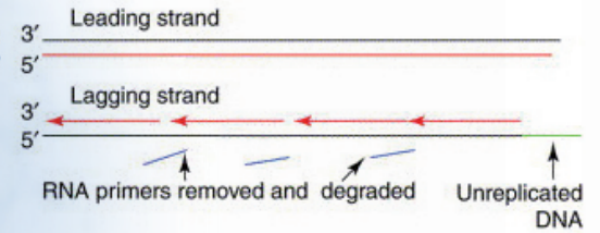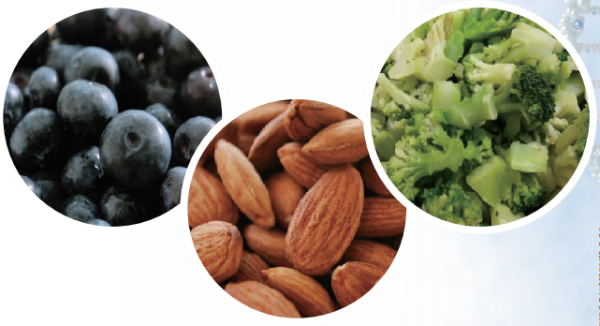The natural process of aging is one that nobody can escape from. People grow old and many physical disabilities appear along with mental weaknesses as time passes by. This inevitable aging process, however, brought forward a question that has motivated researchers all around the world. How exactly does time affect the human body? The fact that people’s abilities diminish as they grow old is clear, but investigating how the flow of time causes that weakening is not easy to affirm. The Sungkyun Times (SKT) now introduces potential theories regarding aging along with recent efforts by scientists to fight against what is considered unavoidable.
Biological Definition of Aging
What is the meaning of ‘aging’?
The term ‘aging’ is generally used to refer to the natural procedure of growing old as time takes its toll on the human body, and many physical weakness follow. Biologists say that when a person becomes 80 years old, his or her lung capacity and heart’s blood pumping rate can decrease by 50% and the range of hearing by 70%. Senescence, which describes this phenomenon of weakening, is known to start at the cellular level and is of most interest in the biological and medical fields. Cellular aging or cellular senescence indicates the dwindling of cells, which makes cells unable to perform cell division and fail to play their roles in the human body. Since these aged cells cause inconveniences to the surrounding cells, they are eventually recognized as sick cells by the body and are eliminated. Aged cells are not a problem as long as the number is low but if too many cells go through the cellular aging process, numerous functions in the body start to fail to operate properly and it becomes a serious issue.
Cellular Aging and Physical Ability
Breathing, moving, digesting, and even thinking is done with the help of enzymes in the human body. Enzymes are one of the most important ingredients that let the body function properly. In fact, the existence of enzymes even determines whether something is a biological life or not. These enzymes are constructed of protein and cofactors: vitamins or metals such as iron and magnesium. The reason that insufficient intake of vitamins or metals causes problems in the human body is because they are required for enzymes to function. The same can be said for protein, and much of this protein is made in cells of the human body. When a cell goes through cellular aging and fails to produce these proteins, the body will have trouble with breathing, moving, thinking, and many other functions that are required to live on. Therefore, the study of aging must start on the cellular level. Scientists have discovered various reasons as to why cellular aging occurs, but the two most major causes were found in DNA and the mitochondria.
Secret of Aging, Hidden in Cells
The key reason why cells do not live on forever is because every cell has a fixed lifespan. Cells usually perform cell division about 50 to 70 times before their lifespan comes to an end. Through many researchers’ efforts, the root of this fixed lifespan was found in the DNA replication process.
DNA Replication Leads to Cellular Aging
- DNA Replication Process

DNA, or deoxyribonucleic acid, is referred to as the ‘code of life’ in many cases. As mentioned before, enzymes let the body function, proteins make up enzymes, and cells create protein. DNA earned its title as the code of life because it holds the genetic key which guides cells when creating protein. In order to protect and deliver this genetic code, DNA goes through a replication process every time a cell divides. DNA begins the first step of its replication process by unraveling its intertwined two strands. The resulting two single strands then go through the second step and special genes called primers are added. Primers perform a special role in the replication process by announcing the starting point of where the DNA replication should begin. Through the help of these primers, an enzyme called the DNA polymerase lengthens the new strands of DNA. After the entire DNA is copied, primers are removed from the strand and replaced with the corresponding DNA to end the replication process.
- Lifespan Shortened by DNA Replication
While this DNA replication process is known to protect genetic information, it is ironically shortening a cell’s lifespan at the same time. As shown on the diagram above, the DNA replication has a slight difference in the two strands. This difference occurs because the unzipped single strands of DNA are facing opposite directions. Although DNA is usually expressed as two intertwined laces, the structures of each strand are designed to face each other. This directional property of DNA is generally marked with a 3’ or 5’ direction.

DNA polymerase, the enzyme which does most of the replication, only succeeds in its role when a 3’ of a gene is provided. The primers mentioned in the replication process are actually special genes that provide this 3’ to let the DNA polymerase start its job. This directional property causes the replication process to have different numbers of primers for each strand. One strand of DNA needs only one primer, while the opposite strand needs numerous primers to successfully perform DNA replication. These two different methods of replication result in a continuous strand and a discontinuous strand like the picture shown above. The discontinuous strand itself is not a problem because it connects its fragments of DNA as the replication process continues. The problem that makes DNA replication guilty of aging is found at the end of the replicated strand. Unlike the continuous strand which can replace its primer with the help of DNA polymerase, the end of the discontinuous strand lacks a 3’. This means one of the DNA strands will lose a little part of its genetic information every time DNA replication is performed. There is no way of recovering that lost DNA and the strands shorten each time a cell is divided. Many years of this inevitable repetition makes the body full of aged cells that cannot produce protein at the required level.
Mitochondria and Reactive Oxygen
Another acknowledged theory regarding the cause of aging is related to mitochondria. Mitochondria are cell organs that transfer protein, fat, and carbohydrates into energy. It is where the food consumed by the body becomes energy that cells can use. Oxygen is required in this process, but since not all reactions in the human body are perfectly completed, hazardous reactive oxygen species are created at a rate of 5%. This gas destroys important cellular structures, damages DNA, and makes cells fail to function. Although only a small amount of reactive oxygen is made, many years of accumulation leads to cellular aging.

Mankind’s Struggle against Aging
Preventing Aging through Telomere Research
It is true that DNA replication results in an unrecoverable loss of genes, but the consequences do not appear for quite a long time thanks to the telomere of DNA. Telomere indicates the mass amount of meaningless DNA located at each end of the strand.

A six base code of 5’-TTAGGG-3’ is repeated about 2,500 times at each end to act as a shield that protects important DNA. The amount of telomere decreases as one grows old, and does not grow back naturally. Recent researchers, however, had many breakthroughs in recovering the lost telomere and showed possibilities of curing aging.
The reason why this telomere research of anti-aging is not a fantasy is due to the enormous data collected on one of mankind’s most terrible enemies, cancer. Cancer cells are very normal in many aspects, but have one key factor that makes them uncontainable. Normal cells have a fixed lifespan and go through cell division for a limited number of times, but cancer cells do not have a fixed lifespan and can multiply infinitely. This imperishability results in large lumps of cancer cells, also known as tumors which divide themselves with no end in the human body. Thanks to the large amount of data on cancer cells, it was found that their infinite replication is possible due to an enzyme that creates telomere.
This enzyme, telomerase, continues to make telomere in cancer cells so that their lifespan will not be limited. Genetic engineers these days are researching the similarities and differences of cancer cells’ telomeres with normal cells’ to find a safe telomerase application to humans. Animal tests are showing many promising results. An eelworm’s lifespan was increased by about 20% by lengthening its telomere by 30%, and the application of telomerase on old mice resulted in the recovery of their aging tissue. Some pharmaceutical companies announced that investments were being made to apply telomerase forms of medicine as well. Although much caution is needed before applying telomerase to humans, the comparison research with cancer cells is allowing quick advances.

Reducing the Damage from Reactive Oxygen
Reactive oxygen is made at a low rate of 5%, so it is possible to reduce the damage and prevent accumulation through easy lifestyle changes. The simplest method is adjusting food consumption. There are many antioxidant foods that reduce reactive oxygen such as blueberries, almonds, and broccoli. The consumption of antioxidant foods prevents the accumulation of reactive oxygen damage and slows cellular aging. Another way to reduce reactive oxygen damage is to refrain from overeating. Overeating is known to stimulate the mitochondria more than needed, and creates much more reactive oxygen. It is a simple method, but a very efficient one. For instance, there was an animal experiment that reduced the food consumption of mice for two years. After two years of food control, researchers compared the organs and cellular age of the mice. They discovered that mice that did not overeat had a much healthier body, and that their cellular ages were similar to mice that were only three months old.
Aside from food control, there is a biological method recently presented to reduce reactive oxygen damage. Cells in the human body contain digestive cell organs that are called lysosomes. Lysosomes are responsible for eliminating useless or harmful material inside cells, but too much damage from reactive oxygen interfered with this process. Many researchers recently found a way to restore lysosomes so that active oxygen damage will be eliminated rather than left to accumulate.
Even though aging might be nothing to worry about at the moment, everyone will have to face it someday. These days, many studies and failures are repeated in the struggle of humans to escape the clutches of time. Current technological and ethical circumstances hinder the immediate success of prolonging the aging process, but it may well become possible in the future before Kingos become old and gray.
